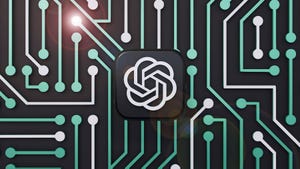
Insight and analysis on the data center space from industry thought leaders.
Enhanced Functionality on Branch Circuit Power Meters Reduces DCIM Cost
Deploying devices with greater functionality including multi-protocol support, data logging, and an onboard web interface can greatly reduce the Total Cost of Ownership of your overall DCIM solution, writes Stephen Prueger of Trendpoint.
April 8, 2014

Stephan Prueger is vice president of sales at TrendPoint Systems.
Anybody that has deployed a sophisticated DCIM system knows that the Return on Investment (ROI) associated with capabilities like real-time monitoring, intelligent alerting and asset management makes this a worthwhile venture. As such, more data center operators are deploying DCIM solutions across their facilities to both reduce downtime and drive significant CapEx/ OpEx cost savings. Yet, according to the Uptime Institute’s 2013 Data Center Industry Survey, 60 percent of advanced owners and operators cite cost as the primary barrier to DCIM adoption.
This disconnect is a common one with enterprise software deployments. And while there are no silver bullets when it comes to rolling out DCIM, deploying devices with greater functionality including multi-protocol support, data logging, and an onboard web interface can greatly reduce the TCO of the overall solution.
Multi-Protocol Support
DCIM vendors tout the benefit of a “single pane of glass”, the ability to pull together several disparate applications. Application consolidation is a big part of the long-term ROI for facilities managers. But this may not be possible if the facility is loaded with devices supporting just single, legacy or proprietary protocols.
And while middleware vendors that sit between the device and the DCIM front end will claim the benefits of protocol conversion, it is far more efficient for devices to speak directly to the DCIM system. Direct communication can minimize total device counts in the facility, reduce single points of failure, and help eliminate multiple license fees for monitoring the same points.
Data Logging/Backup
Managing all the data generated by rapid polling becomes a big issue as device counts increase. Jaces are also commonly used to aggregate data between the device and the DCIM solution. This isn’t necessary for devices with onboard data logging and backup, as they can handle the workload associated with measuring continuous data over frequent intervals without the need of additional hardware and software. The net result is the ability to scale your device infrastructure much more efficiently and cost effectively.
Onboard Web Interface
Managing adds, moves, and changes to the infrastructure becomes increasingly challenging as device counts increase. One way to mitigate the complexity is to deploy devices with an onboard web interface. This allows the device data to be read remotely from the network as opposed to requiring a direct connection. Validating DCIM data becomes much simpler, and any adds, moves, and changes in the device configuration can be managed through the DCIM interface which helps maintain the “single pane of glass” paradigm.
Implementing a DCIM solution isn’t a discrete event for facility and IT professionals. Instead, it is a continuous process of deployment and maintenance, constantly evolving over time. The key to maximizing ROI is to streamline those initiatives as much as possible. As such, utilizing devices with a high level of functionality can significantly reduce the time, cost, and complexity over the lifecycle of the project.
Industry Perspectives is a content channel at Data Center Knowledge highlighting thought leadership in the data center arena. See our guidelines and submission process for information on participating. View previously published Industry Perspectives in our Knowledge Library.
About the Author
You May Also Like




.jpg?width=300&auto=webp&quality=80&disable=upscale)




